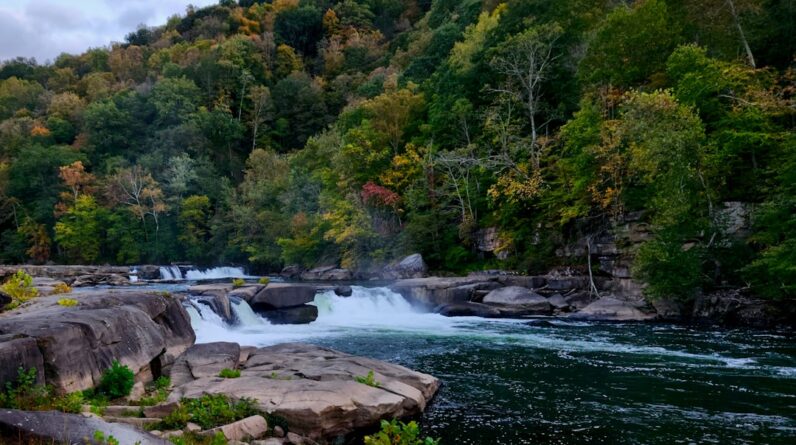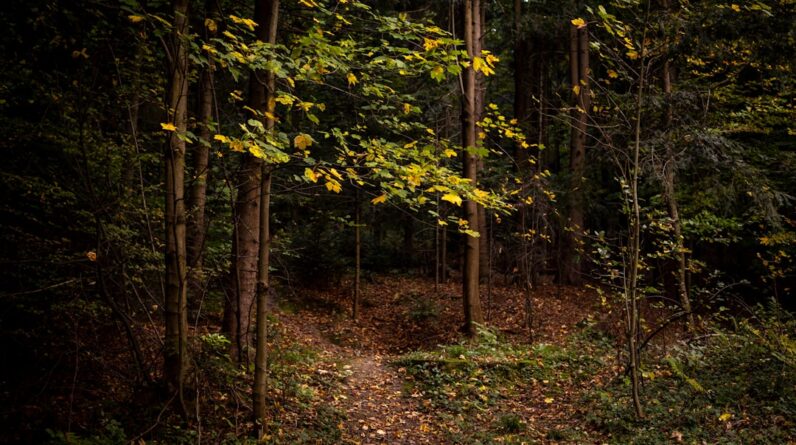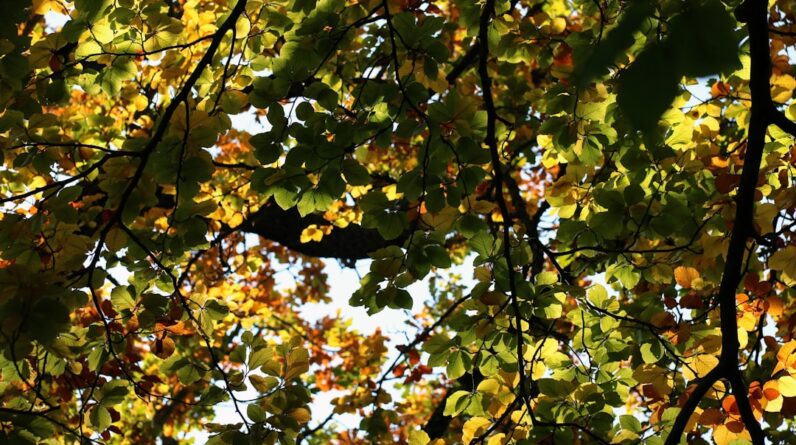Algonquin Park, located in Ontario, Canada, is a natural paradise that spans over 7,600 square kilometers. Established in 1893, it is the oldest provincial park in Canada and is renowned for its stunning landscapes, diverse wildlife, and pristine wilderness. The park is a haven for nature lovers and outdoor enthusiasts, offering a wide range of activities such as hiking, canoeing, fishing, camping, bird watching, photography, and winter sports. Algonquin Park holds great importance in Canada’s natural heritage and is a symbol of the country’s commitment to conservation and preservation.
Key Takeaways
- Algonquin Park is a natural paradise in Ontario, Canada, known for its diverse wildlife and scenic beauty.
- Visitors can discover a range of wildlife in the park, from moose to black bears, making it a popular destination for nature enthusiasts.
- Hiking trails and scenic routes offer opportunities to explore the park’s natural beauty, while canoeing and kayaking provide a serene way to experience the waters.
- Fishing is a popular activity in Algonquin Park, with a variety of fish species available for anglers and fishing enthusiasts.
- Camping in Algonquin Park offers a unique experience amidst nature, with a range of campsites and facilities available for visitors.
Discovering the Wildlife of Algonquin Park: From Moose to Black Bears
Algonquin Park is home to a rich variety of wildlife, making it a popular destination for wildlife enthusiasts. The park is particularly known for its population of moose, which can often be spotted grazing along the park’s roadsides or wading in its lakes and rivers. Black bears are another iconic species found in Algonquin Park, and visitors may have the opportunity to observe them from a safe distance. Other wildlife species that can be found in the park include white-tailed deer, beavers, otters, foxes, wolves, and a wide variety of bird species.
To increase your chances of spotting wildlife in Algonquin Park, it’s important to be patient and observant. Early morning and late evening are the best times to see animals as they are most active during these times. It’s also recommended to drive slowly along the park’s roads and keep an eye out for any movement or signs of wildlife. Binoculars and a good field guide can also be helpful for identifying different species. Remember to always keep a safe distance from wildlife and never feed or approach them.
Hiking Trails and Scenic Routes: Exploring the Beauty of Algonquin Park
Algonquin Park boasts a vast network of hiking trails that cater to all levels of hikers, from beginners to experienced trekkers. The trails vary in length and difficulty, offering opportunities for short walks or multi-day backpacking trips. Some of the popular hiking trails in the park include the Centennial Ridges Trail, which offers breathtaking views of the surrounding landscape, and the Mizzy Lake Trail, which takes hikers through diverse ecosystems and offers opportunities for wildlife sightings.
In addition to hiking trails, Algonquin Park also offers scenic routes that can be explored by car or bicycle. The Highway 60 Corridor is a 56-kilometer stretch of road that winds through the heart of the park, offering stunning views of lakes, forests, and wildlife. The route is dotted with lookout points and picnic areas, providing ample opportunities to stop and take in the beauty of the park.
Canoeing and Kayaking in Algonquin Park: Paddling through Serene Waters
Algonquin Park is a paradise for canoeing and kayaking enthusiasts, with over 2,400 lakes and 1,200 kilometers of rivers and streams to explore. The park’s pristine waters offer a serene and peaceful experience, allowing visitors to immerse themselves in nature and escape the hustle and bustle of everyday life. Canoeing or kayaking in Algonquin Park provides a unique opportunity to navigate through winding waterways, spot wildlife along the shores, and camp on remote islands.
Before embarking on a canoe or kayak trip in Algonquin Park, it’s important to plan ahead and be prepared. Make sure to check the weather conditions and water levels before setting out, as they can greatly affect your experience on the water. It’s also recommended to bring proper safety equipment such as life jackets, a map or GPS device, and a whistle or signaling device. Familiarize yourself with the park’s rules and regulations regarding camping and wildlife encounters, and always practice Leave No Trace principles to minimize your impact on the environment.
Fishing in Algonquin Park: A Paradise for Anglers and Fishing Enthusiasts
Algonquin Park is a paradise for anglers and fishing enthusiasts, offering a wide range of fishing opportunities in its pristine lakes and rivers. The park is home to a variety of fish species, including lake trout, brook trout, smallmouth bass, northern pike, and walleye. Fishing in Algonquin Park provides a peaceful and rewarding experience, allowing visitors to connect with nature while trying their luck at catching a trophy fish.
To plan a successful fishing trip in Algonquin Park, it’s important to obtain the necessary fishing licenses and permits. The park has specific regulations regarding fishing seasons, catch limits, and bait restrictions, so make sure to familiarize yourself with these rules before casting your line. It’s also recommended to bring appropriate fishing gear and equipment, including a fishing rod, tackle box, and bait. Remember to practice catch-and-release fishing to help preserve the park’s fish populations for future generations.
Camping in Algonquin Park: A Unique Experience Amidst Nature

Camping in Algonquin Park offers a unique opportunity to immerse yourself in nature and experience the wilderness up close. The park offers a variety of camping options, from backcountry camping to car camping and even roofed accommodations such as cabins and yurts. Backcountry camping allows visitors to venture deep into the park’s interior and set up camp at designated campsites along the canoe routes or hiking trails. Car camping is available at several campgrounds throughout the park, offering amenities such as picnic tables, fire pits, and washroom facilities.
When planning a camping trip in Algonquin Park, it’s important to make reservations well in advance, especially during peak seasons. Familiarize yourself with the park’s camping regulations and guidelines, including rules regarding campfires and wildlife encounters. It’s recommended to bring appropriate camping gear and equipment, including a tent, sleeping bag, cooking utensils, and food. Remember to practice Leave No Trace principles and leave your campsite as you found it to help preserve the park’s natural beauty.
Bird Watching in Algonquin Park: A Haven for Bird Lovers and Ornithologists
Algonquin Park is a haven for bird lovers and ornithologists, with over 270 bird species recorded within its boundaries. The park’s diverse habitats, including forests, wetlands, and lakeshores, provide ideal conditions for a wide variety of bird species to thrive. Some of the bird species that can be spotted in Algonquin Park include loons, herons, woodpeckers, warblers, and owls.
To maximize your chances of spotting birds in Algonquin Park, it’s important to bring binoculars or a spotting scope to get a closer look at the birds. A field guide or birding app can also be helpful for identifying different species. Early morning and late evening are the best times for bird watching as birds are most active during these times. It’s recommended to explore different habitats within the park to increase your chances of seeing a variety of bird species.
Photography in Algonquin Park: Capturing the Unspoiled Beauty of Nature
Algonquin Park offers endless opportunities for photography enthusiasts to capture the unspoiled beauty of nature. The park’s stunning landscapes, diverse wildlife, and vibrant colors make it a photographer’s dream come true. Whether you’re interested in landscape photography, wildlife photography, or macro photography, Algonquin Park has something to offer.
To capture the best photos in Algonquin Park, it’s important to plan your shots and be patient. Take the time to scout out different locations and find unique perspectives. Consider the lighting conditions and time of day, as early morning and late evening often provide the best lighting for photography. It’s also recommended to bring a tripod to ensure sharp images, especially in low light conditions. Remember to respect the park’s wildlife and natural environment while taking photos and always practice ethical photography.
Winter Activities in Algonquin Park: Snowshoeing, Skiing, and Skating
Algonquin Park transforms into a winter wonderland during the colder months, offering a wide range of activities for winter sports enthusiasts. Snowshoeing is a popular activity in the park, allowing visitors to explore its trails and forests on foot. Skiing is another popular winter activity, with groomed ski trails available for both classic and skate skiing. The park also offers opportunities for ice skating on its frozen lakes and ponds.
When planning a winter trip to Algonquin Park, it’s important to dress appropriately for the cold weather and bring appropriate gear such as snowshoes, skis, or ice skates. Check the park’s website or contact the park office for trail conditions and updates before setting out. It’s also recommended to bring extra layers of clothing, food, water, and a map or GPS device in case of emergencies.
Conservation and Preservation Efforts in Algonquin Park: Ensuring a Sustainable Future for the Wilderness
Algonquin Park is not only a natural paradise but also an important symbol of Canada’s commitment to conservation and preservation. The park plays a crucial role in protecting the region’s biodiversity and providing habitat for a wide variety of plant and animal species. It also serves as a valuable research site for scientists studying ecology, wildlife biology, and climate change.
To ensure a sustainable future for Algonquin Park, it’s important to support the conservation and preservation efforts in the park. This can be done by following the park’s rules and regulations, practicing Leave No Trace principles, and respecting the park’s wildlife and natural environment. It’s also recommended to support organizations and initiatives that work towards the conservation and preservation of Algonquin Park, such as the Friends of Algonquin Park or the Algonquin to Adirondacks Collaborative.
Algonquin Park is a natural paradise that offers a wide range of activities for nature lovers and outdoor enthusiasts. Whether you’re interested in wildlife, hiking, canoeing, fishing, camping, bird watching, photography, or winter activities, Algonquin Park has something for everyone. The park’s diverse landscapes, rich wildlife, and pristine wilderness make it a must-visit destination for those seeking a true connection with nature. It’s important to support the conservation and preservation efforts in Algonquin Park to ensure a sustainable future for this wilderness and to preserve its beauty for generations to come.
If you’re looking to explore the hidden gems of Algonquin Park, you won’t want to miss “The Call of the Wild: Unveiling Algonquin Park’s Best-Kept Secrets.” And while you’re there, why not indulge in some healthy and delicious meals? Check out this related article on Travelogs: 2 Types of Foods for Cancer Prevention: Are You Eating These Daily? Discover the power of nutrition and how it can contribute to your overall well-being.








